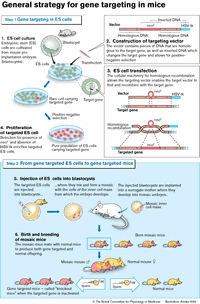Distinct type of virus found in cancer tissue of HIV-positive patients with lymphoma
University of Florida researchers studying samples from HIV-positive patients who died with a type of cancer called non-Hodgkins lymphoma have discovered the existence of two different HIV-1 populations — one that infects normal tissues and another that infects cancerous tissues.
The finding shows for the first time that the HIV-1 at work in cancer cells is genetically different than the HIV-1 infecting other cells, a possible insight into the cause and progression of lymphoma. The finding may help with the development of cancer therapies for both HIV-positive and non-infected people.
About 10 percent of HIV-positive patients will develop lymphoma, a type of blood cancer that occurs when white blood cells that help protect the body from infection and disease behave abnormally, often forming tumors in the lymph nodes, spleen, bone marrow, blood or other organs.
“Lymphoma is very aggressive and does not respond well to therapy in HIV patients,” said Marco Salemi, Ph.D., an assistant professor in the department of pathology, immunology and laboratory medicine at the UF College of Medicine. “Surprisingly, we saw two different populations of HIV — one that infects tumors and one that infects healthy tissues. This suggests there is a specific HIV population associated with onset of lymphoma. If true, that would be an ideal target for medical interventions to fight cancer.”
Researchers investigated HIV in healthy tissues and tumors from two patients. Samples were obtained through the AIDS and Cancer Specimen Resource. Analysis showed the virus subtypes intermixed only in the lymph nodes. Tumor tissue showed a 100-fold increase in the HIV population associated with lymphoma, indicating a significant relationship between HIV evolution and tumor growth.
Furthermore, researchers used a computational technique to track how the “lymphoma” HIV moved from one tissue to the next over time, essentially mapping how the cancer spread, or metastasized. The findings were first published in PLoS ONE.
Topics
Organizations
Other news from the department science

Get the life science industry in your inbox
By submitting this form you agree that LUMITOS AG will send you the newsletter(s) selected above by email. Your data will not be passed on to third parties. Your data will be stored and processed in accordance with our data protection regulations. LUMITOS may contact you by email for the purpose of advertising or market and opinion surveys. You can revoke your consent at any time without giving reasons to LUMITOS AG, Ernst-Augustin-Str. 2, 12489 Berlin, Germany or by e-mail at revoke@lumitos.com with effect for the future. In addition, each email contains a link to unsubscribe from the corresponding newsletter.





















































